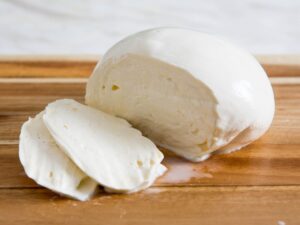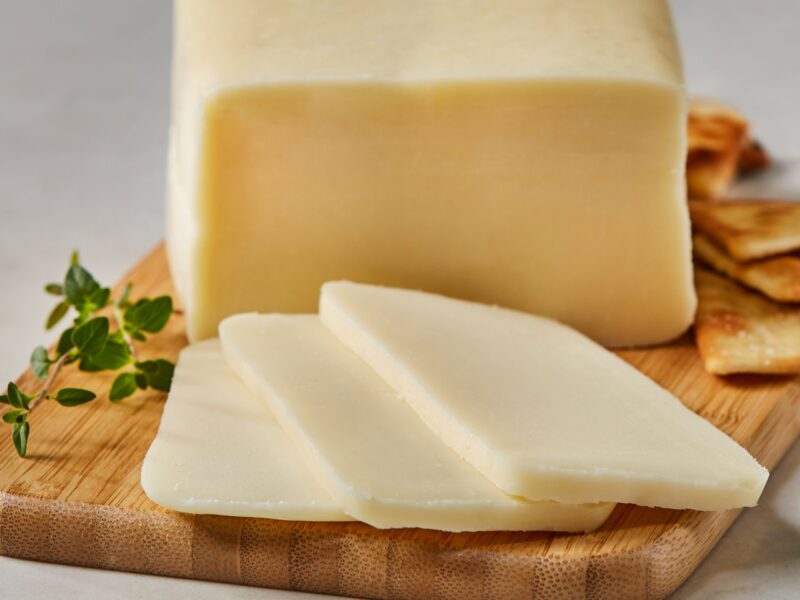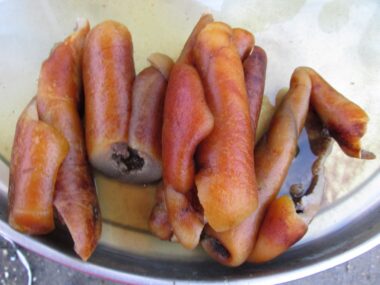Mozzarella cheese is a popular and versatile cheese that originated in Italy. It has become a staple in many cuisines around the world due to its mild flavor, unique texture, and melting qualities.
Types of Mozzarella
- Fresh Mozzarella: This type is soft, moist, and has a high water content. It is usually packed in water to maintain its freshness.
- Low-Moisture Mozzarella: This version has been aged for a longer period, resulting in a firmer texture. It’s commonly used for grating and melting, making it a popular choice for pizzas and baked dishes.
Production Process
- Traditionally, mozzarella is made from the milk of water buffalo (mozzarella di bufala) or cow’s milk. The milk is curdled, and the curds are then stretched and kneaded to form a characteristic smooth and elastic texture.
- Industrial processes may involve using pasteurized cow’s milk and microbial rennet.

Flavor Profile
- Mozzarella has a mild, delicate flavor. Fresh mozzarella is slightly tangy and milky, while aged or low-moisture mozzarella has a more savory and nutty profile.
Texture
- Fresh Mozzarella: Soft, moist, and has a creamy texture.
- Low-Moisture Mozzarella: Firm, less moist, and can be shredded or sliced.
Common Uses
- Caprese Salad: Sliced fresh mozzarella with tomatoes, basil, and a drizzle of olive oil.
- Pizza: One of the most popular pizza cheeses, known for its reliability and gooey texture when melted.
- Lasagna and Baked Pasta: Grated mozzarella is often layered in between pasta and sauce.
- Sandwiches: Sliced mozzarella can be used in sandwiches, especially in combination with tomatoes and basil.
Pairings
- Mozzarella pairs well with tomatoes, basil, balsamic vinegar, and olive oil, forming the classic Caprese combination.
- It complements a variety of other ingredients, including prosciutto, arugula, and roasted vegetables.
Cultural Significance
- Mozzarella is a key ingredient in many Italian dishes and has become a symbol of Italian cuisine worldwide.
- It’s used in traditional recipes like Margherita pizza and various antipasti.
Varieties
- In addition to traditional mozzarella, there are variations like smoked mozzarella and buffalo mozzarella, which are made from the milk of water buffalo.
Health Considerations
- Mozzarella is a good source of protein and calcium.
- While it contains saturated fat, choosing low-fat or part-skim versions can be a healthier option.
Storage Tips
- Fresh mozzarella is best consumed shortly after purchase. Store it in its brine or water to retain moisture.
- Low-moisture mozzarella can be stored in the refrigerator, and it’s suitable for a longer shelf life.
Dishes with Melted Mozzarella
- Besides pizza, melted mozzarella is used in dishes like chicken Parmesan, eggplant Parmesan, and various casseroles.
Mozzarella Trends
- Mozzarella pearls or bite-sized mozzarella balls have gained popularity for snacking and adding to salads.
- There’s an increasing interest in artisanal and locally produced mozzarella.
In summary, mozzarella cheese is a versatile and beloved cheese that adds creaminess and richness to a wide array of dishes.
Whether enjoyed fresh in a Caprese salad or melted on a pizza, mozzarella remains a staple in kitchens around the world, cherished for its mild flavor and delightful texture.










